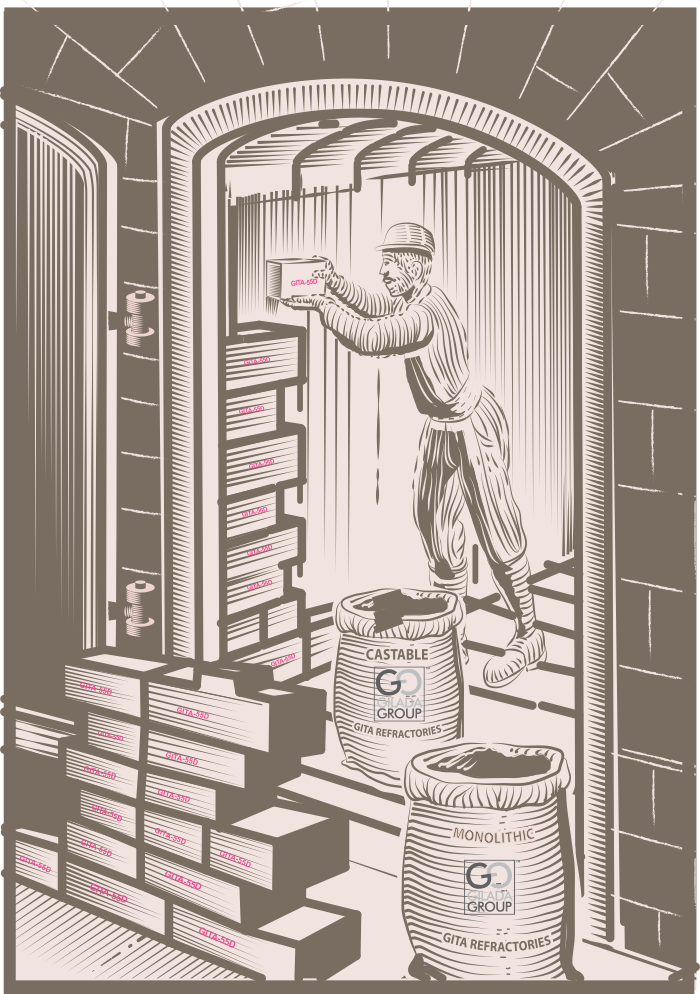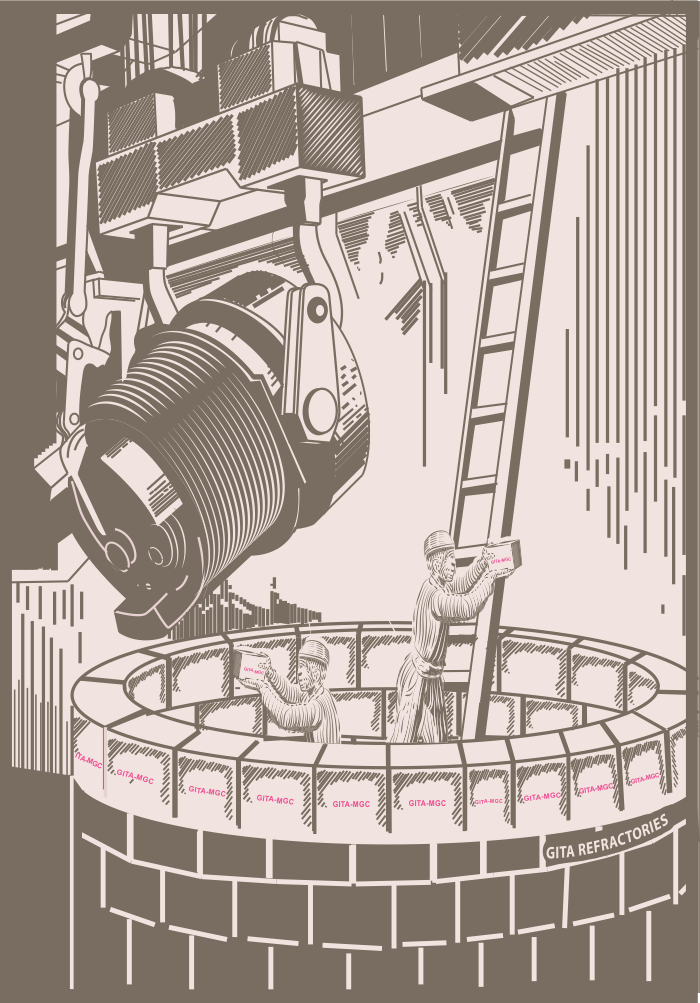Refractories: An Overview.
Refractories are material having high melting points, with properties that make them suitable to act as heat-resisting barriers between high and low-temperature zones. Refractories are useful in constructing application-specific high-temperature areas/surfaces, particularly in furnaces or boilers, as they minimize heat losses through structure.
The value of refractories is judged not merely by the cost of the material itself, but by the nature of a job and/or its performance in a particular situation. Specifically, the performance of a refractory depends on its qualities and quantities in three phases—solid, gas/liquid, and pores—which govern the ultimate property of a refractory material.
A ‘green bond’ is developed by mixing various sizes of a similar refractory material having some strength and property, which are changed during firing/heat treatment in the course of service. The qualities of refractories are thus dependent on their chemical, physical, mineralogical and thermal properties.
Refractory materials are generally tailor-made on the basis of:
- Process parameters like temperature profile, mode of operation, chemical environment, etc.
- Expected quality characteristics
- Best techniques for engineering and application, so that the final physical, chemical, mechanical, and thermal properties are compatible to the application.
- Refractory materials are used in two different forms, namely, shaped and unshaped products.
Bricks
The most familiar form of refractory materials is the rectangular brick shape. However, refractories are presently available in a variety of shapes and sizes for convenience in construction.
Monolithic
There is a class of refractory materials which can form joint-less lining. This class of refractory materials is called monolithic. All unshaped refractory materials have this ability to form jointless tining, and hence they are grouped as monolithic.
- Unshaped refractories are manufactured in powder form as granular material and known as castables, ramming masses, gunning mix, plastic masses, etc.
- Castables are mixed with water before casting.
- Ramming masses are first mixed with water or any other liquid to the required quality and then rammed either manually or pneumatically with a heavy rammer.
- Gunning masses are passed through a machine in which the powder material is put under pressure and conveyed pneumatically through a hose. The material gets mixed up with water before it exits the hose nozzle, and sticks to the surface on which it is applied to form a lining.
- Plastic masses comprise ready-mix material that is applied manually in the furnace to form a lining.
Requirements of right refractory
The general requirements of a refractory material can be summed up as:
- Its ability to withstand high temperatures with sudden changes in temperature.
- Its ability to withstand the action of molten metal, hot gasses, and slag erosion, etc.
- Its ability to withstand load at service conditions.
- Its ability to resist contamination of the material with which it comes into contact.
- Its ability to maintain sufficient dimensional stability at high temperatures and after/during repeated thermal cycling.



